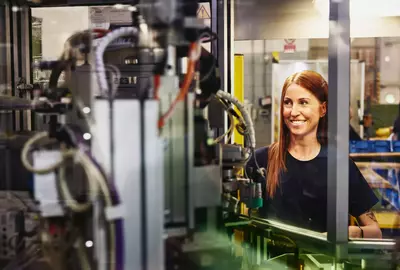The shift to a hybrid work model has emerged as a strategic approach for organizations aiming to balance flexibility with productivity. Successfully transitioning to this new way of working requires thoughtful planning and execution. In this blog post, we will explore best practices and guidelines that can help companies navigate this transition effectively.
To ensure a smooth transition, companies should invest in the right technology infrastructure that supports both remote and in-office work. This includes reliable video conferencing tools, collaborative software, and secure cloud storage solutions.
Creating clear policies and guidelines that outline expectations for communication, performance, and availability can help mitigate any confusion among team members. It's also crucial to foster a culture of trust and flexibility where employees feel empowered to manage their own schedules while meeting their responsibilities.
key considerations for a smooth transition
Transitioning to a new role, project, or workplace can be both exciting and challenging. Ensuring a smooth transition requires careful planning and consideration of various factors that can impact your success.
By focusing on key elements such as clear communication, understanding expectations, and fostering strong relationships, you can navigate this change with confidence. In the following sections, we'll explore essential considerations that will support you in making a seamless transition while minimizing potential disruptions.
1. establish clear policies
Developing comprehensive policies for both remote and in-office work is essential to ensure seamless operations and maintain productivity. Clearly define core hours, such as 10 AM to 3 PM, when all employees should be available for collaboration, regardless of their location. Specify preferred communication channels like email or Slack to facilitate efficient interaction and set reasonable response times to ensure timely exchanges.
Establish clear goals with Key Performance Indicators (KPIs) that apply equally to remote and in-office employees, ensuring accountability across the board. Offer regular training sessions on effective hybrid working practices, focusing on time management, digital communication skills, and maintaining work-life balance. This approach fosters a supportive environment where employees feel valued and empowered while meeting organizational objectives.
2. invest in technology
In the evolving landscape of hybrid work model, technology serves as the critical infrastructure supporting seamless operations. Companies must prioritize implementing reliable communication tools like Zoom and Microsoft Teams to facilitate effective virtual meetings.
Equally important are collaboration platforms such as Slack or Asana, which enable teams to work cohesively regardless of their location. Secure cloud services play a vital role in ensuring employees have access to necessary resources from anywhere, safeguarding data integrity and accessibility.
Additionally, utilizing VPNs or cloud-based systems is essential for maintaining productivity while protecting sensitive information. Regular training sessions are crucial in bridging knowledge gaps and empowering employees to leverage these technologies effectively, fostering a culture of innovation and adaptability within the corporate office environment.
3. foster an inclusive culture
Fostering an inclusive company culture where every employee feels valued, regardless of whether they work remotely or on-site, is essential for a thriving hybrid workplace. To achieve this, it is important to schedule regular one-on-one meetings between managers and team members. These meetings provide personalized support and open communication channels that help address individual needs and concerns.
Additionally, organizing virtual social events can significantly strengthen team bonds by creating opportunities for colleagues to connect beyond work tasks. This promotes a sense of belonging and camaraderie among all employees.
Moreover, ensuring equal opportunities during meetings through inclusive decision-making processes is vital. Encourage diverse perspectives by inviting input from all participants and recognizing the unique contributions each person brings to the table. By actively involving everyone in discussions and decisions, you create an environment where all voices are heard and valued.
Implementing these strategies not only enhances employee satisfaction but also drives productivity and innovation within your organization. A truly inclusive culture empowers individuals to thrive both professionally and personally while fostering a supportive community that celebrates diversity in all its forms.
need help finding the right people to drive your business?
Trust our expertise and reach. We are your partner for talent.
contact us today4. redesign office spaces
Implementing flexible seating arrangements, such as hot-desking and hoteling systems, can significantly enhance both collaborative activities and focused individual work within an organization.
By creating dedicated areas specifically designed for teamwork, and equipped with the right tools, you foster a collaborative environment where ideas can flourish. These collaborative zones enable teams to work together seamlessly and efficiently.
Equally important is providing quiet spaces where employees can concentrate without interruptions, allowing them to focus deeply on their tasks. This balance of environments supports diverse working styles and needs, promoting productivity and employee satisfaction.
Furthermore, these flexible arrangements demonstrate a commitment to adaptability in the workplace, accommodating changing team dynamics and project requirements.
Encouraging employees to choose spaces that suit their current tasks not only boosts morale but also empowers them to take control of their work environment. This thoughtful approach reflects a human-centered workplace culture that values both in-person collaboration and individual focus equally.
5. prioritize employee well-being
Supporting employee well-being is crucial for fostering a productive and positive hybrid work model environment. Offering mental health resources, such as counselling services and mental health days and employee benefit plans, can significantly enhance employees' overall wellness.
Providing ergonomic assessments and home office support ensures that employees have a comfortable and safe workspace, which is essential for their physical health. Encouraging a healthy balance between professional and personal life through programs that promote work-life harmony can lead to increased job satisfaction and reduced stress levels.
By prioritizing these initiatives, companies demonstrate their commitment to the holistic well-being of their team members, ultimately leading to higher morale, increased productivity, and lower turnover rates. Investing in employee well-being not only benefits individuals but also strengthens the organization's culture by creating an environment where everyone feels valued and supported.
conclusion
Transitioning into hybrid work model presents certain challenges; however, with thoughtful planning and execution, organizations can create environments that gives more flexibility while maintaining productivity. Establishing clear policies and making strategic investments are crucial in fostering inclusivity. Redesigning office spaces to prioritize employee well-being is equally important. By implementing continuous feedback loops, organizations can navigate these transitions smoothly and set themselves up for success in an evolving world today and tomorrow.
To achieve this, companies should invest in technology that facilitates seamless communication between remote and on-site employees. Training programs that equip staff with the necessary skills to thrive in a hybrid environment are also essential. Additionally, promoting a culture of trust and transparency will encourage collaboration and innovation across all levels of the organization.
By addressing these key areas, businesses can create a dynamic workplace that not only adapts to change but thrives amid it. This proactive approach ensures that both employees' needs are met, leading to higher job satisfaction and overall organizational success as we move forward into the future of work.
seeking talent with the right skills for your organization?
Our specialized partners for talent are here to help. Get in touch with us today.
connect with a partner





